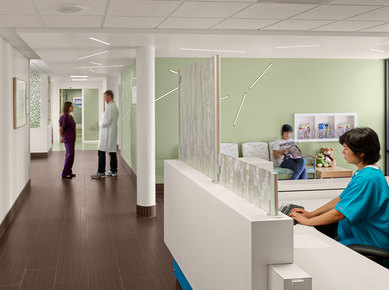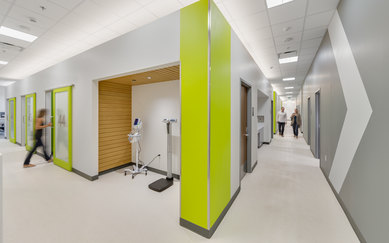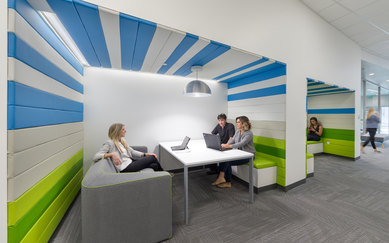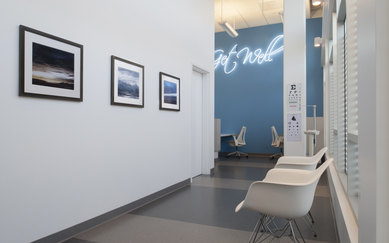Seeing Ambulatory Care Through a New Lens
Collaborative practice models, consumerism, advances in technology, new competitors, and the movement towards value-based care are transforming the way systems are delivering healthcare and wellness to their communities. SmithGroup planners, designers and strategists converged with providers from across the U.S. in a full-day workshop to define the next generation ambulatory care environment. Connecting innovators in healthcare delivery and design, workforce engagement and recruitment, population health, and technology, these industry leaders discussed strategies for innovative care models that will better position providers to support their community, meet patient demand, and improve market share, patient satisfaction and patient outcomes.
Looking at ambulatory care through five different lenses sparked a compelling exploration of potentially transformative “what if” scenarios around industry disruptors. Each lens addressed the key factors that workshop participants felt should be considered in a new era of ambulatory care:
- Population health and wellness
- The impact of digital health and technology
- Workforce engagement and wellness
- Disruptors such as the rise of consumerism and vertical competitors
- The connecting thread of the designed environment and its impact on the patient experience
Shortly after our workshop, the news of a serious new virus began to appear. It wasn’t long before the full scope and scale of the COVID-19 pandemic became clear, and primary and ambulatory care centers across the country began to see a drastic decline in patients or shut down altogether—many moving much of their caseload to telemedicine platforms.
As these services begin to come back online, we don’t yet know the long-term impact this disruption is going to have on ambulatory care: whether any of the trends we discussed will accelerate, decelerate, or simply diminish in importance. We can make educated assumptions, but it will be a while before we know what our new normal looks like, or how long it will last. We have been reconnecting with our panel of experts and attendees to explore these impacts, and to determine whether the changes will be temporary or permanent. For now, in this summary we share where we all thought we were headed, and where we think we may be headed next.
The video and following summary offers a glimpse into the group’s exploration of these topics. For a more in-depth discussion on these and other factors impacting the future of ambulatory care, please contact wayne.barger [at] smithgroup.com (Wayne Barger), Director of SmithGroup’s Health Practice, erin.mcnamara [at] smithgroup.com (Erin McNamara), Health Market Strategist, or ann.kenyon [at] smithgroup.com (Ann Kenyon), leader of our ambulatory research initiatives.




Part of it is making the designed experience better. I think you can make it welcoming. You can make it personalized. And you can make it convenient. And if you do those things, you’ve created part of your brand.
Ann Kenyon